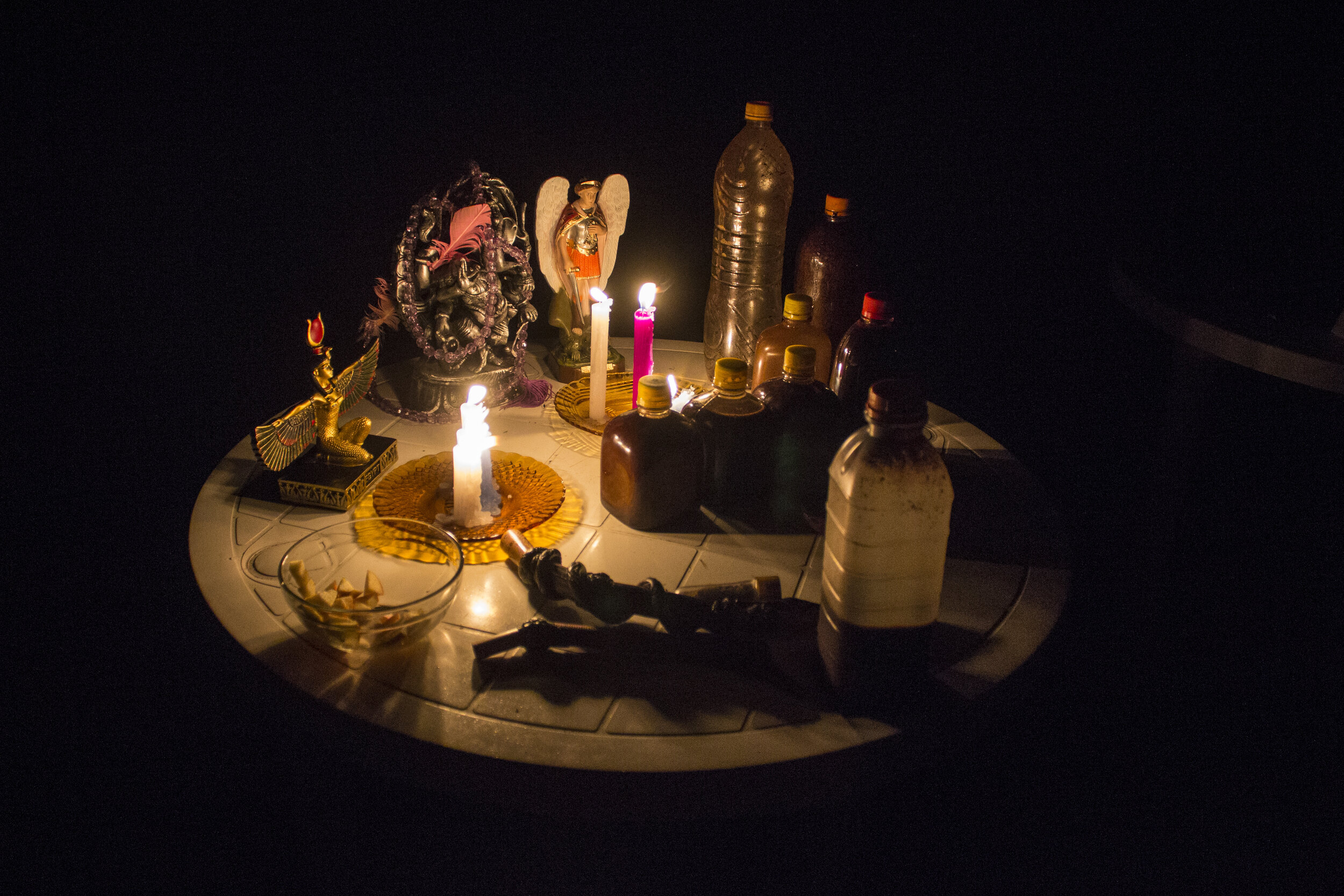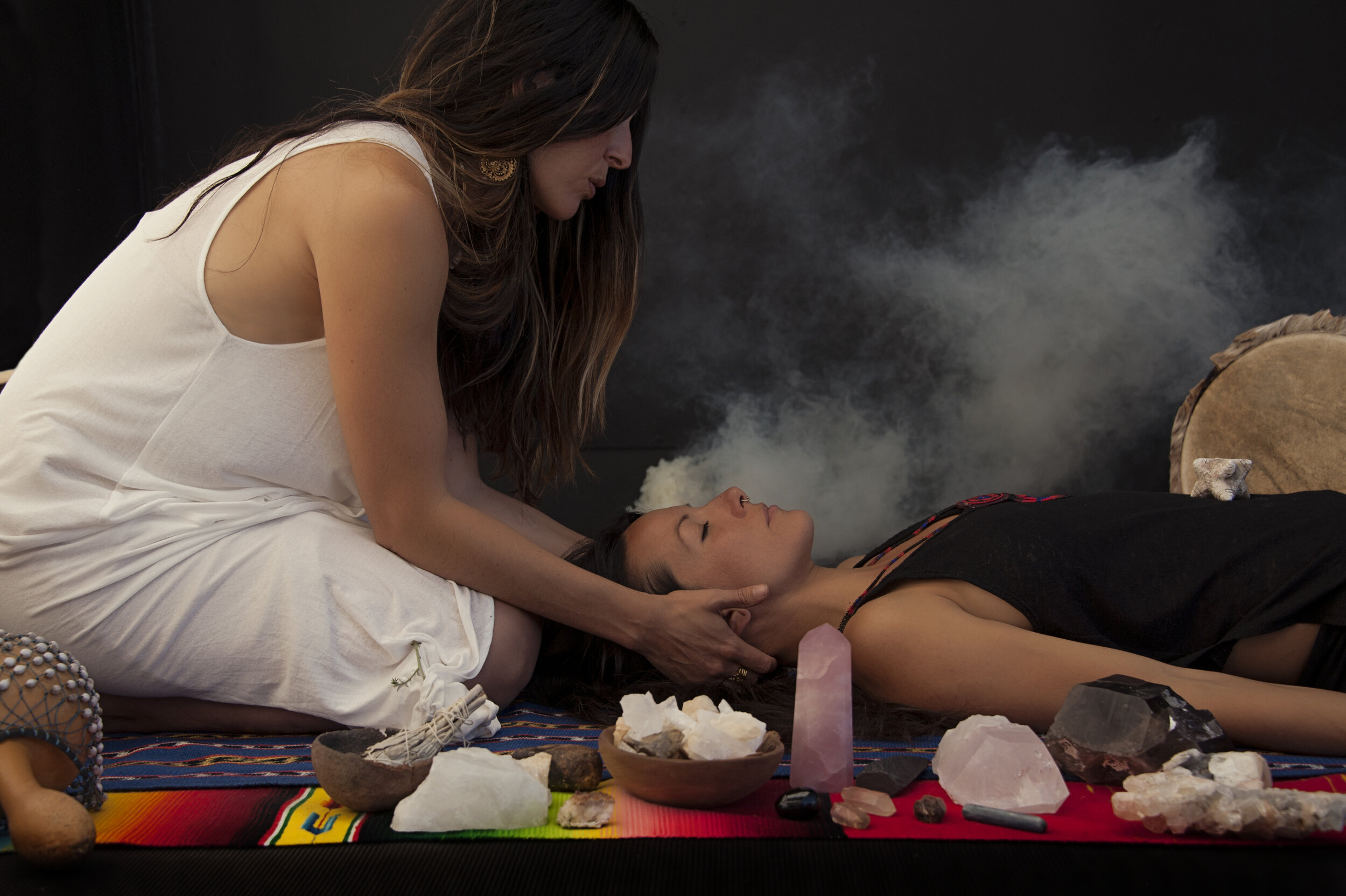Ready to Learn Shamanism?
Learning the art, worldview, and practices of the shaman is extremely rewarding. Fortunately
Whether you are a healer wanting to learn ancient practices, or just interested in shamanic practice
How to Learn Shamanism - What Are the Options?
Recently, shamanism has become popular both for healing work and for personal empowerment. There are a number of ways to learn.
Of course, the best way to learn is through personal contact. Having a teacher provide troubleshooting and feedback in the process is invaluable. Shamanic courses are also common. Generally, these take place through videos and lectures with a variety of course level options available
Classes in Shamanism
There are many different types of shamanism classes. From weekend-long introductory workshops to a multiple-year apprenticeship, to a short-term online course.
If you are just starting out, an introduction to shamanism course is just the thing. This is usually a weekend-long class, either online or in-person. The class size should be fairly small, and you should have lots of opportunities to ask questions. This is a good way to start because you can see if you like shamanism before you commit to a long-term course.
Pre-recorded online classes are OK, but without the teacher contact, you would not be able to troubleshoot or ask questions. Usually, online classes like this are better for advanced topics or personal development after you have the basics down.
Once you have the basics, you may opt to do an apprenticeship. An apprenticeship is usually a year or longer and you study with the same cohort. These are fantastic opportunities to experience community and practice with others. You should take your enrollment is a program like this very seriously. It is a financial and time comittment that others rely upon. Make sure you are all-in and intend on finishing the program.
Shamanic Mentoring
Mentoring is a great option for a lot of people. The drawback to mentoring is that busy teachers, like myself, can't take an unlimited number of students.
With mentoring, you train one-on-one with a shamanic teacher. It is all personal attention all the time. The teacher can address any questions or issues immediately.
I personally customize the learning for each mentoring student. After getting the basics of shamanic journeying we delve into topics of personal interest and focus on things you're most interested in. With mentoring you learn shamanism at your own pace.
Click the button below to email me if you might be interested in mentoring.
Self Learning
I'll start by saying this is not a recommended path. There are a lot of things you might learn from books or videos, once you've learned the basics. Having a qualified teacher to answer questions, steer you away from danger, and correct things when you go off course is important.
Thought-provoking guides to get you started in shamanism include Michael Harner's book "The Way of the Shaman" and Gary Lee Smith's spiritual travel guide, "Earth Guide". I'm fond of everything written by Sandra Ingerman.
Finding The Best Shamanic Teacher For You
Before I enter into a long-term relationship with any student we will always have an initial meeting. This might mean you've taken an Introduction to Shamanism class over a weekend. If you've never trained with me, then we would set up a one on one meeting.
During that meeting, we would discuss your goals for learning shamanism. I would ask questions to determine what you already know about shamanism, and what you're interested in learning. I give you the opportunity to ask all of your questions.
At the end of that meeting, we both decide if the relationship is a good fit. If either one of us doesn't think the fit is good, then I am happy to refer you to another teacher who is a trusted colleague.
Finding the right teacher of shamanism is incredibly important. If a teacher does not give you the opportunity to ask questions before learning from them, or won't refer you to someone else - that might be a red flag.
The same is true for healing sessions. IIf I feel like I am not the best person to work with someone, i will always refer.
When you meet with your prospective shamanic teacher, make sure that you explore your interests. There are many different areas of shamanism and no teacher is an expert in all of them.
If you feel like I might be a good teacher for you, find out more about me, and get in touch.
Common Questions About Learning Shamanism
What is shamanism?
Shamanism is an ancient set of spiritual practices, combined with a belief in the spirit world. Shamans have existed since prehistoric times, in cultures spanning the whole world. The word shaman came into English from Siberia, but there are shamanic people everywhere from North and South America, Europe, Africa, Australia, Pacific Islands.
Anthropologist Mircea Eliade wrote a definitive book on shamanism in the 1950s. In it, he presents several definitions of shamanism. He focuses on shamanism as a technique for entering ecstasy to work with the spirit world on behalf of a community. Since then many anthropologists have debated the definition. I'll leave that for the academics.
The modern practice of shamanism, removed from culturally specific practices is sometimes called core shamanism. Core shamanism was codified by anthropologist Michael Harner and others in the late 20th century The basic practice is called the shamanic journey. Shamanic journeying iis comprised of three things:
The use of altered states of consciousness (also known as trance)
Travel in non-ordinary reality (such is the upper world and lower world)
Working with helping spirits (these include power animals)
The journey is used for shamanic healing, divination, and spiritual development. A shaman develops personal power in order
Apart from the practices, shamanic traditions form an animistic and Earth-focused spirituality.
Relationships are very important in shamanism. Relationship to mother earth, to your community, to spirit, and to yourself. In shamanic cultures, the shaman is often the central spiritual functionary. Frequently he or she would perform ceremonies, conduct healings, and provide guidance.
Shamanism is a path of direct revelation. Your shamanic studies will teach you to work with spirit to answer your own questions. Teachers of shamanism are guides, not gurus.
How can I learn more about shamanism?
There are a lot of resources out there from books to videos, to courses. If you just want to learn a bit more about shamanism - I have prepared a pretty extensive FAQ here. I also have a YouTube channel with dozens of videos dedicated to shamanism.
Is it dangerous to practice shamanism?
In the western world where many New Age practices have taken hold, there is a pervasive idea that nothing spiritual can be harmful. This is in contrast to people who would scare you away from any spirits or the spirit world in general.
In my experience, you can learn shamanism quite safely. There are some risks, but a qualified teacher would steer you away from them while pointing them out. Most shamanic practice is completely safe.
That being said, there are a few things to look out for upfront. The practice of shamanism can release trapped emotions and surface shadow material. Ultimately these things are a beneficial part of spiritual practice. However, they can be unpleasant or overwhelming at times.
If you have any kind of condition which includes psychosis, speak to a good teacher to find out if shamanism is right for you. It may be that the answer is, "not right now, but eventually."
Do I have to do drugs to learn shamanism?
Hallucinogenic drugs like ayahuasca, psilocybin, peyote and amanita muscaria are used by shamans in some cultures. Some of these drugs, particularly ayahuasca, have become popular for recreational use.
None of these are required at all to learn shamanic journeying. Some of them are dangerous, and none of them have antidotes.
I teach my students to use a more universal way of entering a trance. We use rhythm, typically the sound of drumming. Recent research shows that shamanic drumming creates a similar brain state to psilocybin (magic mushrooms). The nice thing about using rhythm for a personal journey is that you are in control. You can stop the journey any time you want.
Is shamanic journeying the same thing as meditation?
I am both a shamanic teacher and a certified teacher of meditation. While meditation can create an altered state of consciousness, in my own life they are different.
Because meditation practices vary significantly, there may be some that are close to journeying, but the goals are usually different. A shamanic journey also feels very different from meditation. My guess is that brain monitoring would show the two states to be quite different.
How do I become a shaman?
This is a complicated question. In my teaching tradition, one does not apply the label of shaman to oneself. I refer to myself as a shamanic practitioner or a shamanic teacher. The title of shaman can be given by the tribe or by others, but even elders like my teacher's teacher do not call themselves a shaman.
There are traditions where this is OK. However, there are no globally set qualifications, or degrees, or certificates. Shamanism has no central authority.
In indigenous shamanic cultures, there are different criteria for initiation into the path of the shaman. In many cultures, one would have to go through a health crisis or trauma. In others, being born with birth defects is seen as a sign of a shamanic future. In others, entering the shamanic path is hereditary.
Ultimately, the title isn't as important as what you want to do with your shamanic training.
What's Required To Become a Shamanic Healer?
I studied shamanic healing intensely for over three years before taking on clients. Someone needs a level of knowledge and personal experience before they start conducting healing sessions. More than a set of shamanic healing techniques, one must also do a certain amount of personal development.
Many things can arise in a session, and you would not serve your clients well if you didn't know how to handle them. Here's a short list of things you'd want to know before taking on a client. This list is not all-inclusive; it's just made to be a baseline.
Divination - shamanic methods of divining the causes and treatments for illness
Power Animal Retrieval
Shamanic Extraction
Ancestral and Past-Life Healing
Cord Work
Soul Retrieval - treating soul loss
Deposession
Curse Unraveling
Wound Healing
These are some of the basics. I also wouldn't want to be in practice without significant shadow work. You'll also need to learn how to protect yourself from unwanted spiritual energies.
How do I know if shamanism is my life path?
I can't answer that for you; only spirit can. Spirit will guide you onto your path - sometimes not so gently.
Often, people who choose this path feel a calling. Beyond that, there may be some initiatory crisis - an illness or emotional turmoil. I also find that when you're on the right path - you'll know it. Spirit will show you.
You would want your belief system to align with the shamanic worldview. If you only believe in the physical world and not the spiritual realms, you will run into a stumbling block. If you don't believe in the ability of spiritual energies to enhance and heal the human life force, you'll also have a hard time.
Introduction to Shamanism & The Shamanic Journey
In this class you will learn the core practices of shamanism, including journeying, divination, and power animal retrieval. You will journey to meet your helping spirits and get a deep understanding of the spirit world.
Advanced topics in shamanism
From time to time, I may be called to teach expanded topics in shamanism such as past life or shadow work. blessing and clearing, or daily spiritual practice.
If you have a space, school, or group and would like to custom design a class with me, feel free to contact me.







